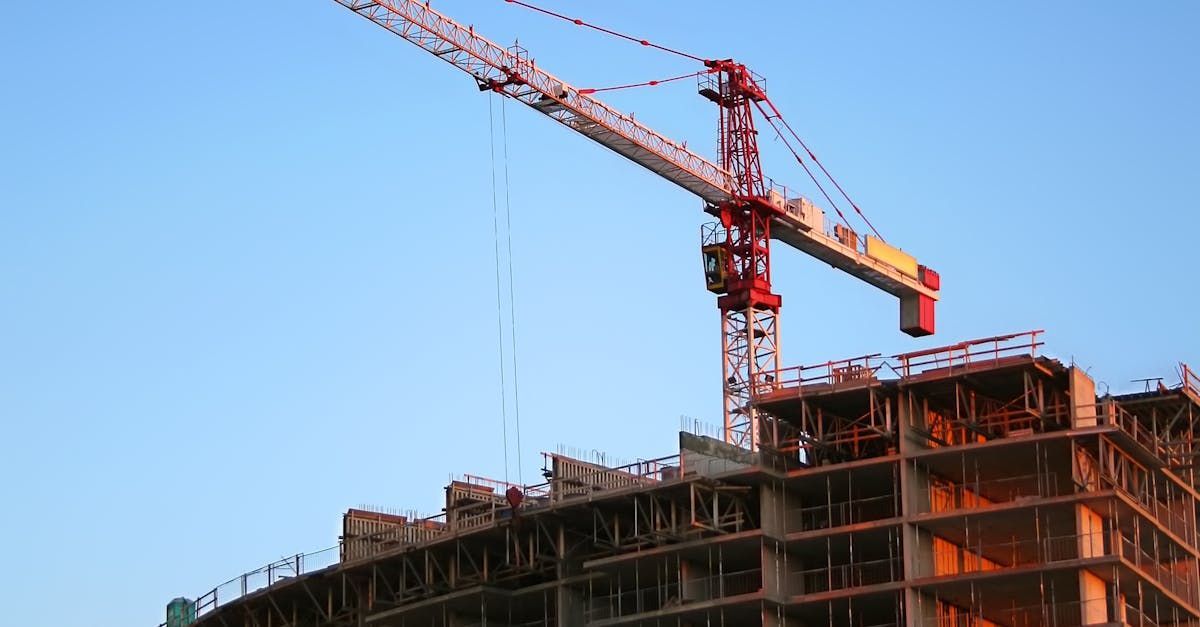What Is Pre-construction? Key Activities and Essential Checklist
The preconstruction phase is a vital stage in any construction project, setting the foundation for its success. It involves a series of activities aimed at thorough planning, risk assessment, and alignment of all stakeholders before physical work begins. From initial consultations and site inspections to budgeting and regulatory approvals, preconstruction ensures that all critical elements are in place for a smooth and efficient construction process. In our well-researched content, we outline the key activities involved in preconstruction and provide an essential checklist to ensure every aspect is thoroughly addressed.
What Is Preconstruction?
Preconstruction, also referred to as the preconstruction phase, is the critical planning stage that occurs before any physical construction begins. It involves thorough preparation, evaluation, and collaboration to set the foundation for a successful construction project. This phase ensures that all necessary details—from design and materials to timelines and compliance—are considered and aligned with the project’s goals.
The preconstruction phase in construction includes processes such as feasibility studies, site inspections, scheduling, and resource planning. It plays a vital role in mitigating risks and ensuring the project's efficiency and cost-effectiveness.
Why Is Preconstruction Critical in Construction Projects?
Preconstruction planning is essential because it determines the overall direction and feasibility of the project. Here are some reasons why the preconstruction process is critical:
- Risk Mitigation: By identifying potential challenges early, this phase minimizes costly mistakes.
- Efficiency: Proper planning ensures streamlined operations during the construction phase.
- Stakeholder Alignment: Clear communication between all parties helps avoid misunderstandings.
- Budget Control: Early cost estimates and resource allocation keep the project within budget constraints.
Key Steps in the Preconstruction Process
1. Initial Consultation with Stakeholders
The preconstruction process begins with a consultation between stakeholders, including clients, designers, and contractors. This step establishes the project’s vision, objectives, and requirements.
2. Site Analysis and Inspection
A thorough site analysis evaluates the land’s suitability for construction. This includes checking for potential challenges like soil conditions, environmental impact, and zoning regulations.
3. Project Scope Definition
During this stage, the project’s goals and deliverables are clearly outlined. The scope definition ensures that all stakeholders have a shared understanding of the project’s objectives.
4. Design Development Coordination
This involves integrating design concepts with practical construction considerations. Collaborative meetings help refine the design while keeping feasibility in mind.
5. Regulatory Approvals and Compliance Checks
Before construction begins, obtaining permits and ensuring compliance with local building codes is crucial. Regulatory approvals prevent legal complications down the line.
6. Construction Scheduling and Timeline Planning
A realistic timeline is developed, outlining key milestones and deadlines. This step ensures that the project progresses efficiently and stays on track.
7. Resource Planning and Allocation
This step involves identifying the resources required, including materials, labor, and equipment. Effective resource allocation minimizes delays and keeps the project running smoothly.
8. Preconstruction Meeting
The preconstruction meeting brings together all stakeholders to finalize plans, clarify roles, and address any remaining questions. This step ensures alignment before moving forward.
What Does a Preconstruction Manager Do?
A preconstruction manager oversees the entire preconstruction phase. Their responsibilities include:
- Coordinating Stakeholders: Ensuring seamless communication between clients, designers, and contractors.
- Budget Management: Preparing detailed cost estimates and ensuring the project stays within budget.
- Scheduling: Developing a comprehensive timeline with realistic deadlines.
- Risk Assessment: Identifying potential risks and creating contingency plans.
- Regulatory Compliance: Managing permits and ensuring adherence to legal requirements.
Preconstruction Checklist: Ensuring Project Readiness
A preconstruction checklist ensures that all necessary preparations are completed. Key items include:
- Site assessments and inspections
- Initial budget framework and estimates
- Stakeholder approvals and documentation
- Finalizing designs and regulatory approvals
- Communication and team alignment
Outputs of the Preconstruction Phase
The preconstruction phase generates several critical outputs that serve as a roadmap for the construction process. These outputs include:
Detailed Project Scope
A clear and detailed outline of the project’s objectives, deliverables, and limitations. This document ensures that everyone involved has a unified understanding of the project’s goals.
Comprehensive Project Schedule
A well-structured timeline that incorporates key milestones, deadlines, and dependencies, ensuring that the construction phase proceeds efficiently.
Stakeholder and Team Alignment Reports
Documentation highlighting the roles and responsibilities of each stakeholder, ensuring clarity and accountability throughout the project lifecycle.
Resource Allocation and Procurement Plans
Plans detailing the required materials, equipment, and labor, along with their sourcing strategies. This output minimizes delays and ensures resource availability.
Risk Assessment Reports and Contingency Plans
Comprehensive identification of potential risks and corresponding mitigation strategies, ensuring that the project can navigate challenges effectively.
Benefits of Preconstruction
Preconstruction offers a range of benefits that directly contribute to the success of construction projects:
- Improved Predictability: By addressing potential issues early, the preconstruction phase reduces uncertainties during construction.
- Cost Savings: Proper planning and resource allocation help avoid unnecessary expenses and delays.
- Enhanced Communication: Regular collaboration and alignment meetings foster better communication among stakeholders.
- Optimized Resource Utilization: Effective planning ensures that materials, labor, and equipment are used efficiently.
- Streamlined Processes: The structured approach of preconstruction minimizes disruptions and keeps the project on schedule.
Advanced Tools and Technology in Preconstruction
The integration of advanced tools and technology has revolutionized the preconstruction process:
- Building Information Modeling (BIM): BIM enables detailed 3D modeling, enhancing design accuracy and collaboration.
- AI and Machine Learning: Predictive analytics powered by AI helps identify risks and optimize planning.
- Digital Collaboration Platforms: Tools like Procore and PlanGrid streamline communication and document management among stakeholders.
Common Challenges in Preconstruction and How to Overcome Them
Despite its benefits, the preconstruction phase can encounter several challenges:
- Stakeholder Misalignment: Ensure regular communication and collaborative meetings to align goals.
- Design Revisions: Address design changes promptly to avoid scope creep.
- Regulatory Hurdles: Stay informed about local regulations and engage experienced compliance experts.
- Resource Constraints: Develop robust procurement strategies and maintain backup suppliers.
The Future of Preconstruction
The preconstruction phase is evolving with new trends and innovations:
- Sustainability Practices: Incorporating eco-friendly materials and processes during preconstruction.
- Digital Twins: Using virtual replicas of buildings for planning and testing.
- Augmented Reality (AR): Visualizing projects in AR to improve design accuracy and stakeholder understanding.
By embracing these advancements, the preconstruction process will continue to add value to construction projects.










